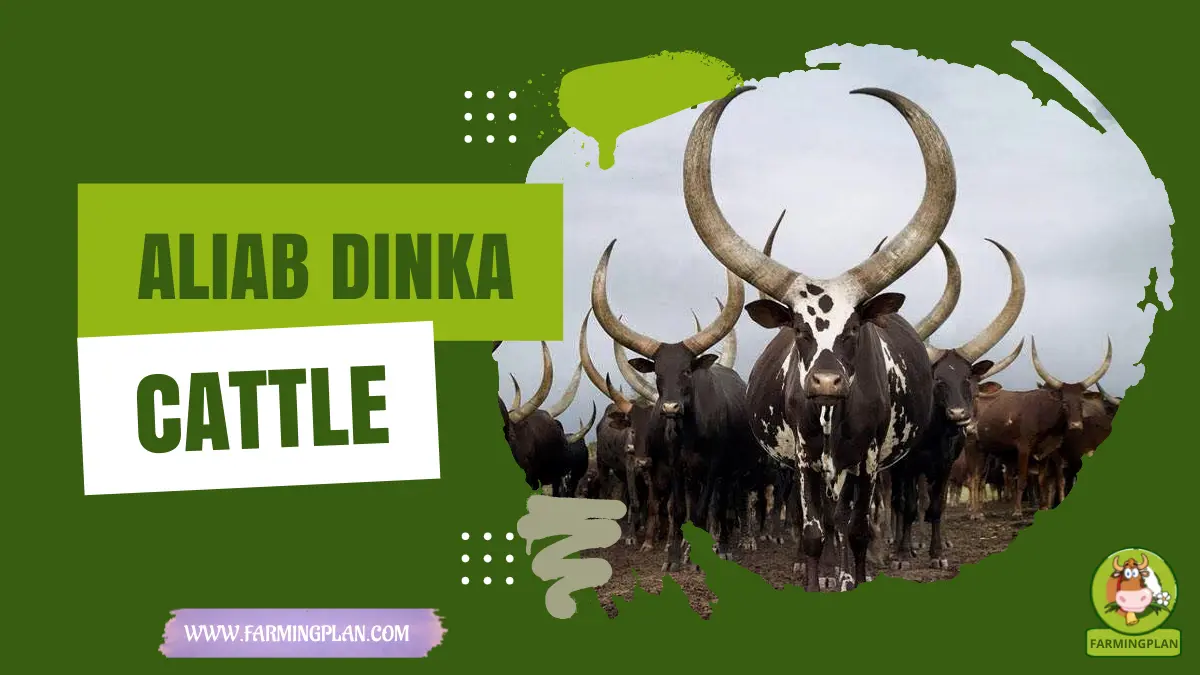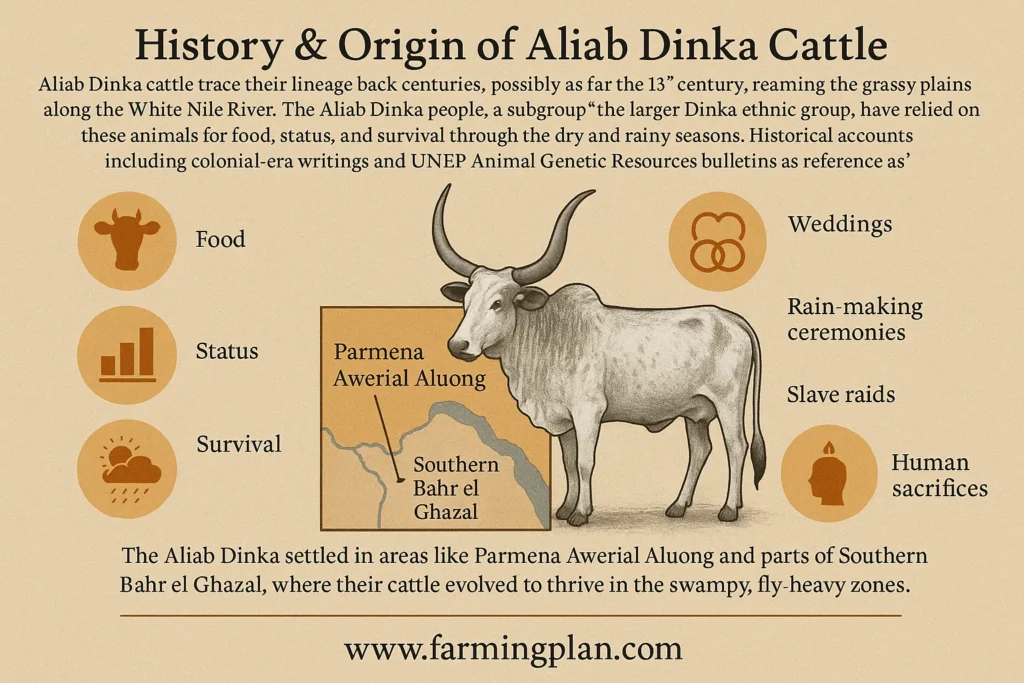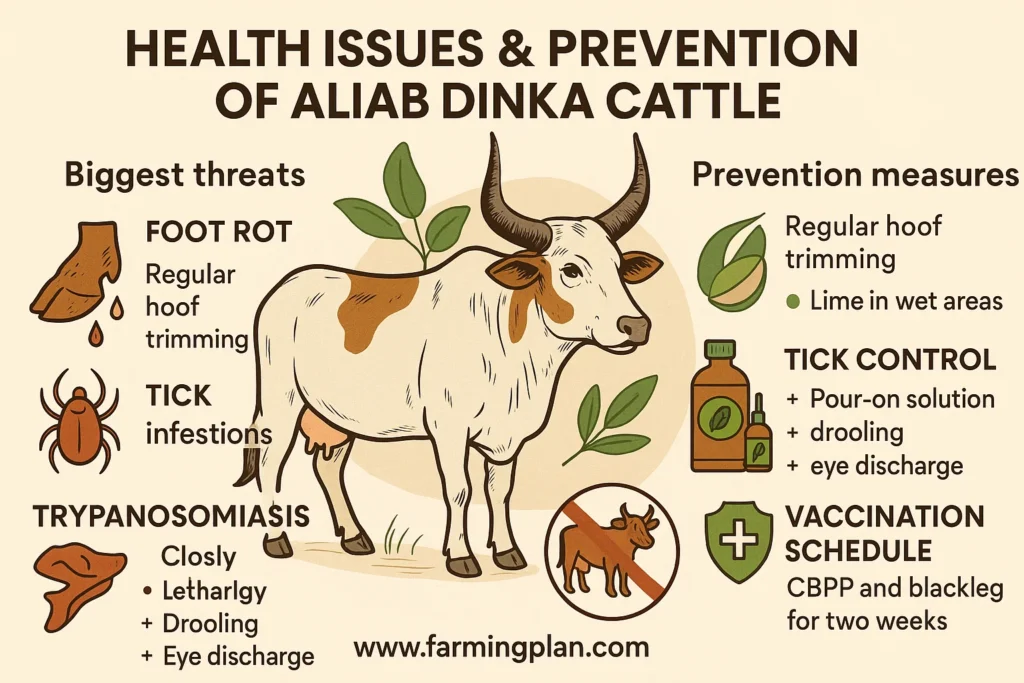If you’ve ever wandered through the cattle camps of South Sudan or followed the flow of the White Nile, you’ve probably seen the majestic Aliab Dinka Cattle. These cattle aren’t just any livestock—they’re the heart and soul of the Aliab Dinka people, a proud Nilotic tribe whose lives revolve around these sacred animals. I’ve worked with various indigenous cattle breeds, but none have captivated me like these. In this guide, I’ll walk you through everything I’ve learned about the Aliab Dinka Cattle—from their deep-rooted history to the best ways to care for them. So, let’s dive into the world of these light-fawn-colored wonders grazing across the Bahr El Ghazal and Upper Nile landscapes.

History & Origin of Aliab Dinka Cattle
The Aliab Dinka Cattle trace their lineage back centuries, possibly as far as the 13th century, roaming the grassy plains along the White Nile River. The Aliab Dinka people, a subgroup of the larger Dinka ethnic group, have relied on these animals for food, status, and survival through the dry and rainy seasons. Historical accounts, including colonial-era writings and UNEP Animal Genetic Resources bulletins, mention the cattle’s role not only in agriculture but in spiritual and cultural rites.

The animals were central during major events—like weddings, rain-making ceremonies, and, unfortunately, during darker times of slave raids and human sacrifices, reflecting both cultural richness and conflict. The Aliab Dinka settled in areas like Parmena Awerial Aluong and parts of Southern Bahr el Ghazal, where their cattle evolved to thrive in the swampy, fly-heavy zones. Compared to other Nilotic Sanga breeds, Aliab cattle are known for their adaptability and their emotional connection with their human caretakers.
Read More: Italian Honey Bee: Transform Your Hive Success
Characteristics
Aliab Dinka Cattle are instantly recognizable by their striking light fawn coat, a reflection of the golden Sudanese sun. Their long, upward-curving horns add to their regal appearance, making them a unique and captivating breed. Aliab Dinka Cattle are not just beautiful, they are also resilient. Their medium to large size, muscular frame, and well-developed hump enable them to survive the long walks to watering holes during the dry season.
Their thin skin and short hair make them well-suited to hot climates, and their ability to sweat less aids in heat tolerance. Another special feature? They’re calm around people—especially the Dinka children who often help herd them. These cattle even respond to voice commands, thanks to the close bond they form with humans in cattle camps.
Nature & Temperament
In my experience, Aliab Dinka Cattle have one of the gentlest temperaments among indigenous African breeds. They’re naturally social and thrive in herds. That’s probably why the Dinka Bor and Agaar Dinka communities trust children to tend to them. They’re incredibly loyal—once a calf bonds with a handler, that relationship often lasts a lifetime.
I’ve seen these cattle respond to songs and chants, often sung by their owners during the early morning herding rituals. They’re not aggressive unless provoked or separated from their group. These cattle enjoy structure and routine. That’s why seasonal migration patterns are crucial. During the rainy season, they stay near the highlands, while the dry season pushes them toward the flooded plains near the Nile River. Stick to their rhythm, and they’ll reward you with loyalty and productivity.
Food & Diet of Aliab Dinka Cattle
Aliab Dinka Cattle are tough—but like any animal, they need the right fuel. Their natural diet includes grasses, legumes, and riverine vegetation. During the wet season, there’s an abundance of pasture near the Nile, but the dry season requires some planning. I recommend feeding them a mix of dry hay, crop residues (like sorghum stalks), and protein-rich supplements like cottonseed cake if natural forage runs low.

Always ensure clean water access—especially after grazing under the hot Sudanese sun. Avoid feeding them moldy hay or water from stagnant pools, which can cause infections. Minerals like salt and phosphorus are also crucial, especially during drought months. These cattle are adapted to lean times, but good nutrition boosts milk yield, calf health, and disease resistance.
Usage & Purpose
Sure, they produce milk and meat, but Aliab Dinka Cattle are so much more. To the Dinka people, they’re status symbols, ceremonial icons, and even currency. A man’s wealth is often measured in how many cattle he owns, and cows are central to marriage dowries. The milk—though not as abundant as European breeds—is nutrient-rich and often used in fermented forms.
Meat is reserved for special occasions. These cattle also serve as draft animals, helping transport loads across muddy floodplains. Their social value outweighs their economic value. Even President Salva Kiir Mayardit has spoken publicly about cattle culture among the Dinka. If you’re raising Aliab Dinka Cattle outside Sudan, it’s worth preserving not just the animals but their cultural role.
Special Features
The horns of Aliab Dinka Cattle aren’t just beautiful—they’re sacred. In Dinka culture, they symbolize spiritual power and are never removed. Some cattle even have their horns trained into specific shapes using ropes—a process that takes years. Their tough hide makes them resistant to biting insects, a blessing in Bahr El Ghazal’s swampy areas.
Plus, they’re known for low parasite loads, making them hardier than European or even some Asian breeds. These cattle also have a unique internal clock—they know when to migrate, where the best grazing is, and how to avoid danger. They can even sniff out water sources in the Upper Nile region with uncanny accuracy. That’s not just instinct—that’s centuries of adaptation.
Health Issues & Prevention of Aliab Dinka Cattle
Even though Aliab Dinka Cattle are tough, they’re not invincible. The biggest threats I’ve faced include foot rot, tick infestations, and trypanosomiasis (sleeping sickness). Swampy pastures increase the risk of hoof infections. I recommend regular hoof trimming and using lime in wet areas to keep their hooves dry. Tick control is a must—use pour-on solutions or neem oil if you prefer natural treatments.

For trypanosomiasis, keep a close eye on lethargy, drooling, and eye discharge—early treatment is key. Vaccination schedules should include CBPP (Contagious Bovine Pleuropneumonia) and blackleg, especially if you’re planning to graze near communal water points. Always isolate new animals for two weeks to prevent disease outbreaks.
Read More: German Pekin Duck: Stunning White Duck With a Purpose
Step-by-Step Farming Guide
If you’re serious about raising Aliab Dinka Cattle, you’re in for a fulfilling experience. These cattle connect generations of herders to the land, the river, and their communities. But like any livestock, they need consistent, thoughtful care. Here’s how I manage my herd from start to finish.
Step 1: Preparing Your Grazing Land
Your land should mimic the Nile River valley—lots of open space, seasonal wetlands, and shaded spots. I prefer rotational grazing with four paddocks, allowing recovery between uses. Install low fencing, as these cattle don’t usually test boundaries. Avoid toxic plants like nightshade and lantana. Allow access to seasonal streams or install a deep-water well with solar pumps for year-round supply.
Step 2: Choosing The Right Herd
Start with a small group—one dominant bull, three to four heifers, and a calf or two. Please make sure they’re free of parasites and certified disease-free. Look for light fawn coloring, curved horns, and alert but calm behavior. Introduce new animals slowly to avoid stress or herd fights. Use a quarantine pen and monitor their behavior for the first two weeks.
Step 3: Feeding & Supplementation Routine
During the rainy season, let them graze freely. In the dry season, supplement with hay, salt licks, and protein cakes. Provide molasses blocks to boost energy. Always have two water troughs—one for drinking and one for wallowing. Don’t overfeed grains; their stomachs are built for forage, not corn. Keep feed troughs clean to avoid mold growth.
Step 4: Daily Health Monitoring
Every morning, check each cow for signs of sickness—drooping ears, labored breathing, wounds, or swelling. Brush them to remove ticks and observe their manure for any changes in texture or color. Keep a simple health record chart with weight, vaccine dates, and any treatments. This makes vet visits more effective.
Step 5: Breeding, Calving & Herd Expansion
Let your bull breed naturally; he’ll pick the best time. Dinka herders believe cows calve best during the early rainy season, and I’ve found this true too. When calving, offer privacy and soft bedding. Keep calves close to their mothers for at least six months. Don’t wean too early—it affects long-term health—Mark calves with traditional tags or microchips for easy tracking.
Expert Tips & Best Practices
- Sing To Your Cattle – They respond to familiar voices and songs. It calms them and builds trust.
- Rotate Paddocks Monthly – Prevents overgrazing and soil erosion.
- Use Natural Fly Repellents – Try neem oil and smoke pits during fly season.
- Avoid Overhandling Calves – Let them bond with their mothers first.
- Document Everything – Breeding dates, treatments, illnesses—it helps you spot patterns early.
FAQs
What is special about Aliab Dinka Cattle?
These cattle are deeply tied to Dinka culture, known for their sacred horns, light fawn color, and adaptability to harsh Nile conditions.
Where are Aliab Dinka Cattle found?
They’re primarily found in South Sudan, especially near the White Nile River in Awerial, Bahr el Ghazal, and Upper Nile regions.
Can Aliab Dinka Cattle be raised outside South Sudan?
Yes, but they need warm climates and seasonal pasture rotation similar to the Nile River basin to thrive.
Are these cattle good for milk production?
They produce moderate but highly nutritious milk, often used in traditional fermented dairy by the Dinka people.
Do they need any special care?
They’re hardy but need regular hoof care, parasite control, and water access, especially during the dry season.
Conclusion
Raising Aliab Dinka Cattle is more than just farming—it’s about preserving a culture that’s survived centuries along the White Nile. These cattle are resilient, loyal, and deeply woven into the life of the Aliab Dinka people. From their sacred horns to their Nile-hardened hooves, every part of these animals tells a story. If you’re thinking about introducing this majestic breed to your farm, know that you’re not just adding livestock—you’re adopting a legacy. So go on, connect with the past, and build your future—one hoofprint at a time.
